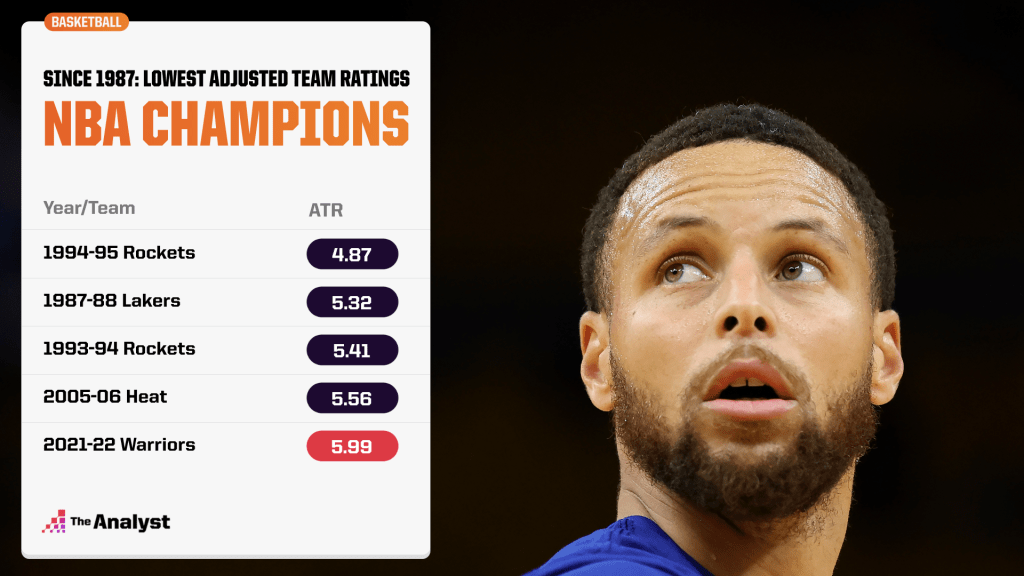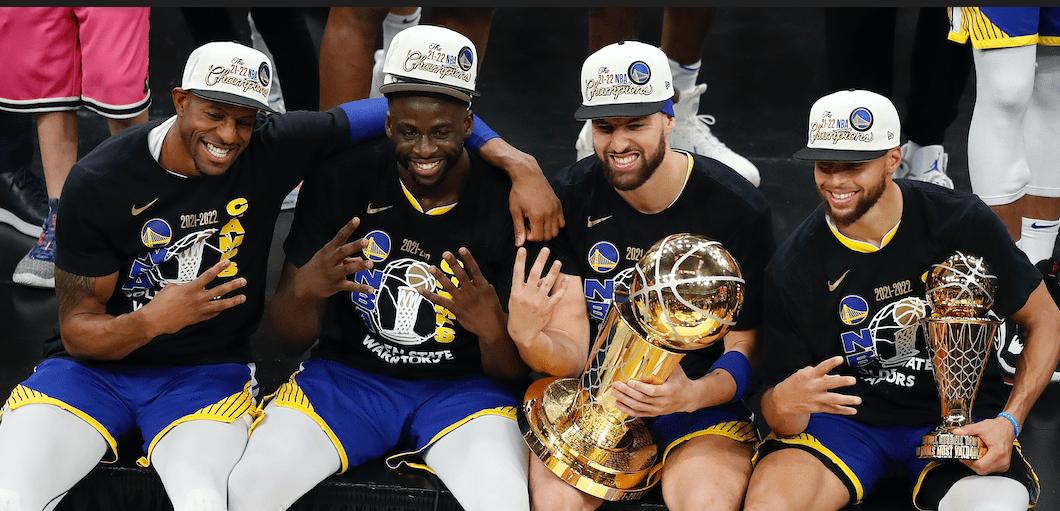You may have heard that the Golden State Warriors just added another championship installment to their glorious dynasty – their fourth installment in eight years.
However, unlike in 2016-17, when the magnitude of their talent was so intense that it enabled them to stampede through the entire gauntlet on route to basketball supremacy, this Warriors’ odyssey to the throne required a far more tactical approach.
Let’s breakdown how they got it done and where this unit ranks against its predecessors.
The Battle of the Paint
In Game 3, the Boston Celtics secured their second and final victory of the series, thanks in large part to the work they did in the paint.
We broke that down afterward, offering three pieces of advice to the Warriors:
- Design your defense so that Draymond Green is typically the low man defender (man, did he get his swagger back).
- Point of attack defenders need to do a better job of keeping their man in front of them and avoiding breakdowns.
- Don’t concede switches without a fight. Fight over the top of screens, mix in some hard hedges/blitzes, and force Boston to eat up clock in its crusade to find the ideal mismatch (third clip). And if you ultimately succumb to their mismatch hunting, make sure you do so late in the shot clock (fourth clip).
The Warriors listened, and what do you know, it worked.
After allowing 52 points in the paint in Game 3, the Warriors held the Celtics to 35.3 points per game for the remainder of the series.
Perpetual Motion
There’s a famous scene in the TV show “The Wire” in which Avon Barksdale tells his nephew D’Angelo, “the thing is, you only have to (mess) up once – be a little slow, be a little slow, be a little late – just once. And how you never gonna be slow? Never be late? You can’t plan for (nothing) like that.”
In a weird way, Avon’s monologue describes the Warriors’ offense to a tee. Golden State runs so many different little actions throughout the course of a singular possession that it doesn’t matter how meticulous and precise the opposing team is in its preparation. A defense only needs to slip up once for the Warriors to pounce.
Over the course of a series, this unrelenting style can wear on even the most resilient opponents, and the historically great Celtics defense is no exception.
Take this play from this play from the third quarter of Game 6 for instance. The Celtics do a good job of derailing Green’s transition voyage. Then they clogged up the dribble handoff to Klay Thompson. Then, NBA Defensive Player of the Year Marcus Smart soldiered through a screen to deny the first leg of the two-man action.
But alas, then there was a rescreen, and the rest was history.
To the Left, to the Left
In the Eastern Conference finals, the Miami Heat’s suffocating defense did a great job exploiting Jaylen Brown and Jayson Tatum’s shortcomings as ball handlers going downhill. The Warriors followed this up by taking this blueprint and adding another wrinkle to the process.
As Jeff Van Gundy keenly observed, the Warriors’ primary initiative on defense was to send the J’s Cha-Cha sliding to their left – the side they felt the least comfortable attacking with.
This approach led to a handful of awkward transactions around the rim that featured both Brown and Tatum uncomfortably trying to finish with their right hand despite moving at full speed to their left.
Tatum absorbed the brunt of these struggles, converting on only 31.1% of his field-goal attempts on drives (down significantly from the 48.8% rate he produced at during the regular season).
Stephen Curry
Curry’s success in this series had multiple origins. Part of it was by design, as the Celtics opted to forfeit pull-up 3s in favor of limiting the playmaking his gravity usually creates. Credit also goes to the Warriors for coming up with creative ways to get Curry loose.
However, the lion’s share of this supernova goes out to the individual splendor of the newly ordained Finals MVP.
Jones is 100% right on the money here.
When the Celtics started the series in drop coverage, Curry burned them (first clip). When Boston adjusted by bringing their bigs to the level of the screen, Curry burned them (second clip). When they switched screens, Curry danced and burned them again (third clip).
And when they threw in the towel and finally brought two to the ball, Curry pinballed the Spalding over to an open teammate, who proceeded to…burn them again (fourth clip).
The Unlikely Title Run
Exigent variables like changes in rules and style of play can make cross-era comparisons difficult and often times unreliable. Fortunately, we have an unbiased model that offers direction when making these comparisons.
The model uses data on both sides of the ball to calculate how many points per 100 possessions better or worse championship teams from 1986-87 to 2021-22 were than the average team during those specific seasons, including the playoffs. The output it produces is that team’s adjusted team rating (ATR).
According to this metric, the Warriors were actually the third-best team this season – finishing with an ATR of 5.99. They finished the season behind the Phoenix Suns, who posted a rating of 7.18, and their Finals adversaries, who posted a score of 7.41.
Overall, the Warriors own the fifth-lowest ATR score of all the NBA champions since 1986-87. That rating sandwiches this group between the 2005-06 Miami Heat, who had an ATR of 5.56, and the 2009-10 Los Angeles Lakers, who had a rating of 6.14.

Their 5.99 ATR pales in comparison to past versions of the regime. The 2016-17 team owns the second-highest ATR (12.82) since 1986-87. Meanwhile, the original crew from Andre Iguodala’s Finals MVP season in 2014-15 is sixth among champions (11.26) over this span.
Even though the data was stacked against them this time, the Warriors used that tactical approach to defy those odds and reclaim the crown in impressive and historic fashion.
Enjoy this? Subscribe to our mailing list to receive exclusive weekly content.
